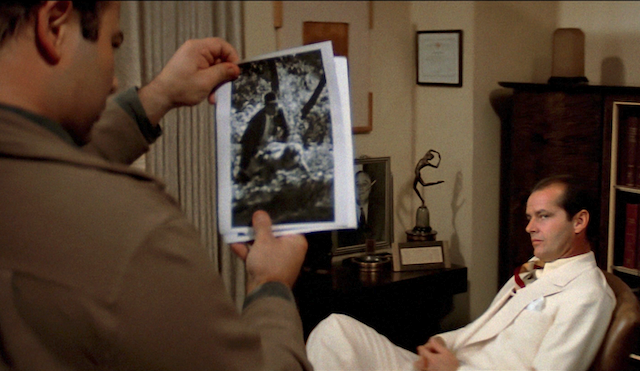Make a Mystery: How to Turn Your Story Idea into a Puzzling Mystery

You’ve got a spark of an idea. Maybe it’s an intriguing snippet of conversation you overheard, a peculiar news story, or just a vivid scene that popped into your mind. However, a story idea alone isn’t enough to create a mystery novel. It’s the foundation, yes, but developing a fully-fledged story that grips readers from the first page to the last requires much more.
A well-crafted mystery needs a meticulous blend of plot, character development, setting, and suspense. You need to transform your initial spark into a complex narrative filled with twists and turns, each step carefully laid out to both challenge and satisfy your readers. It involves creating a detective protagonist with depth and flaws, suspects with believable motives, and red herrings that mislead without frustrating the audience.
Your Core Idea
An initial spark of an idea is just the beginning. To build a substantive mystery novel, you need to expand and flesh out this core concept into a robust foundation that supports an engaging and intricate story. Here’s how you can take that initial inspiration and develop it into the bedrock of your mystery novel.
The Initial Spark or Inspiration
Start by clearly defining what excited you about your initial idea. Was it a specific event, a quirky character, or an intriguing setting? Write down everything you know about this idea, no matter how fragmented. This could be a single sentence, a list, or a detailed paragraph. The key is to capture what makes this idea unique and interesting.
Example:
– “A reclusive author is found dead in his study, with no apparent cause of death and only a cryptic manuscript left behind.”
Brainstorm Techniques to Flesh Out the Idea
Once you have your initial spark documented, it’s time to brainstorm and dig deeper. Use methods like mind mapping or free writing to explore different facets of your idea. Ask yourself a range of questions about the mystery, such as:
– Who are the key characters involved?
– What is at stake?
– Where and when does the story take place?
– What secrets and motives could lie behind the surface?
Mind Map Example:
– Center: Reclusive author’s death.
– Branches: Characters (detective, suspects, family, neighbors), Motives (jealousy, greed, revenge, accident), Setting (isolated mansion, small town), Clues (scripts, letters, hidden compartments), Red Herrings (false suspects, misleading evidence).
Determine the Central Mystery
At the heart of every mystery novel is, of course, the mystery itself. This is the puzzle that your detective and readers are trying to solve. Clearly define what this central mystery is:
– What happened? (The crime or central event)
– Who is involved? (Victims, suspects, witnesses)
– Why did it happen? (Motives and backstory)
– How was it accomplished? (The methods used)
Example (Expanded):
– What: The renowned author was found dead.
– Who: Potential suspects include the author’s estranged family, his literary agent, a rejected apprentice, and a jealous rival author.
– Why: Possible motives range from financial gain to personal vendettas to uncovering hidden truths.
– How: The death appears to be natural with no signs of struggle, creating an open-ended mystery about the cause.
Synthesize the Elements
After brainstorming various elements of your story, it’s time to start synthesizing them into a cohesive plot outline. Decide which characters, settings, and plot points will play key roles in your central mystery. Sketch out a rough outline from start to finish, emphasizing the main conflict and points of suspense.
Outline Example:
1. Inciting Incident: The author’s mysterious death.
2. Introduction of Detective/Protagonist: Introduce the character and their motivation for solving the case.
3. Establishing Stakes: Highlight why solving this mystery is crucial.
4. Initial Investigation: Introduce key suspects and potential motives.
5. Clues and Red Herrings: Plant significant clues and misleading information.
6. Rising Action: Heightened tension as more secrets and conflicts come to light.
7. Climax: The revelation of the true method and motive behind the death.
8. Resolution: How the detective ties everything together and the aftermath for the characters involved.
By taking your initial spark and methodically expanding it, you’ll create a solid groundwork for your mystery novel. This foundational work ensures that your story has the depth and complexity to captivate readers, transforming that initial glimmer into an engrossing narrative ready to be explored.
Develop the Main Plot
Now that you have a core idea for your mystery novel, it’s time to develop a compelling main plot that will keep your readers on the edge of their seats. A well-structured plot is the backbone of any good mystery, guiding readers through a maze of clues, red herrings, and revelations toward a satisfying conclusion.
Define the Main Conflict and Stakes
At the heart of your mystery novel is the main conflict – the critical issue that propels the story forward. This is often the crime or mysterious event that needs to be solved. Define the conflict clearly and establish the stakes: why is solving this mystery crucial?
Example:
– Main Conflict: The cause and circumstances of the author’s death.
– Stakes: If the mystery remains unsolved, an innocent person might be wrongfully accused, or a dangerous adversary could go free, and the reputation of the deceased author may be tarnished.
Create a Compelling Hook and Inciting Incident
The first impression is paramount, so your story needs an engaging hook that grabs the reader’s attention immediately. The inciting incident is the event that sets the mystery in motion.
Example:
– Hook: The chilling scene of the author’s lifeless body found in an unsettlingly undisturbed study, with a cryptic manuscript nearby.
– Inciting Incident: The protagonist (a detective or curious individual) is drawn into the mystery, perhaps due to a personal connection or professional obligation.
Outline Major Plot Points and Climax
To ensure your story maintains momentum and intrigue, outline the major plot points that will drive the narrative forward. These include the key events where new clues are discovered, suspects are interrogated, and tensions escalate, leading to the climax, where the mystery is ultimately solved.
Major Plot Points:
1. Inciting Incident: The protagonist discovers the author’s death and begins the investigation.
2. Introduce Suspects: Potential suspects are introduced, each with possible motives and alibis.
3. First Major Clue: A significant clue is found in the author’s manuscript that hints at a deeper conspiracy.
4. Red Herrings: Misleading evidence throws the investigation off track, increasing tension and suspense.
5. Midpoint Twist: A major revelation or twist that redefines the direction of the investigation.
6. Increasing Danger: The investigation becomes more perilous, and the protagonist faces personal threats.
7. Final Clues Revealed: The crucial pieces of evidence are uncovered, leading to the climax.
8. Climax: The mystery is solved, revealing the true culprit and their motive.
Example of a Plot Outline:
1. Inciting Incident:
– The famous author is found dead with no apparent cause of death.
– A cryptic manuscript discovered near the body piques the detective’s interest.
2. Introducing Suspects:
– The author’s estranged daughter, bitter over being left out of the will.
– The literary agent, who stood to gain from unfinished works.
– A rejected apprentice who may have felt wronged.
– Rival author with a history of enmity.
3. First Major Clue:
– The manuscript contains hidden messages that suggest foul play and a deep, dark secret.
4. Red Herrings:
– A series of misleading clues point fingers at innocent suspects.
– False leads include anonymous letters and staged evidence meant to deceive.
5. Midpoint Twist:
– A shocking revelation that the author was not who he seemed, unveiling a double life and hidden enemies.
6. Increasing Danger:
– The detective receives threats warning them to cease the investigation.
– New dangers emerge, such as attempted attacks and sabotages.
7. Final Clues Revealed:
– The detective uncovers a hidden diary and an important witness comes forward.
– Connections between the manuscript and real-life events are uncovered.
8. Climax:
– The protagonist confronts the true culprit, piecing together the method and motive.
– A dramatic showdown ensues, culminating in the resolution of the mystery.
By clearly defining your main conflict, creating a captivating hook, and outlining major plot points, you ensure that your story progresses in a logical, engaging manner. This scaffolding will help to keep readers invested in the mystery, eager to uncover the truth alongside your protagonist. This meticulous planning transforms your initial inspiration into a well-crafted journey full of suspense and intrigue.
Complex Characters
Characters are the lifeblood of your mystery novel. To create a compelling story, you need a cast of well-developed characters that readers can connect with, root for, or even suspect. Crafting complex characters involves giving each person in your story depth, motivations, and a role that propels the plot forward.
Your Detective/Protagonist
Your protagonist, often a detective or an amateur sleuth, is the cornerstone of your mystery novel. This character needs to be intriguing, relatable, and fallible. They must have a unique set of skills and a personal stake in solving the mystery.
Traits and Backstory:
– Personality: Determine key personality traits that define your detective. Are they cynical or optimistic? Methodical or impulsive?
– Skills: What special skills do they possess that make them uniquely suited to solving the mystery?
– Backstory: Develop a rich backstory that explains their motivations and personal history. This could include past traumas, professional experiences, or unresolved issues.
– Flaws: Ensure your character has flaws and vulnerabilities. Perfection is boring—flaws make them human and relatable.
Example:
– Name: Detective Clara Morton
– Personality: Determined, intuitive, and slightly obsessive.
– Skills: Expert in forensic analysis and a keen understanding of human psychology.
– Backstory: Clara was a top student at the police academy, but a personal loss drove her to private investigation. She’s haunted by a case she couldn’t solve years ago.
– Flaws: Sometimes too emotionally invested and has trouble delegating tasks.
Suspects and Their Motivations
A good mystery novel thrives on a diverse set of suspects, each with plausible motives and distinct personalities. Each suspect should have a believable reason to be involved in the crime, and they should also have alibis that the protagonist will need to investigate.
Character Profiles:
– Name: Construct a memorable name.
– Motive: Clearly articulate why they might have committed the crime.
– Alibi: Create a backstory that provides them with an alibi or rationale for suspicion.
– Personality: Give them individual quirks, habits, and mannerisms that make them stand out.
Example Suspects:
1. Suspect: Mia Donovan (estranged daughter)
– Motive: Angry over being cut out of the will.
– Alibi: Claims she was at a charity gala during the time of death.
– Personality: Bitter, secretive, and prone to emotional outbursts.
2. Suspect: Lucas Harper (literary agent)
– Motive: Financial gain from posthumous publications.
– Alibi: Says he was at a book signing event.
– Personality: Charismatic and manipulative, with a hidden temper.
3. Suspect: Derek Miller (rejected apprentice)
– Motive: Revenge for being publicly humiliated by the author.
– Alibi: Claims to have been at a writer’s retreat.
– Personality: Brooding, intense, and highly intelligent.
4. Suspect: Emily Winters (rival author)
– Motive: Professional jealousy and past feud.
– Alibi: States she was on a promotional tour in another city.
– Personality: Witty, sharp, and seemingly composed under pressure.
Well-Rounded Secondary Characters
Secondary characters support the story and add depth. These could be friends, family, or colleagues of the protagonist, or witnesses who provide crucial information. Each should contribute to the development of the plot or the protagonist’s journey.
Role and Contribution:
– Identify what role each secondary character plays in advancing the plot.
– Develop their personalities and backstories to make them feel real.
Example Secondary Characters:
– Character: Jack Reynolds (protagonist’s confidant)
– Role: Provides emotional support and insights from a different perspective.
– Personality: Loyal, humorous, and resourceful.
– Character: Dr. Lydia Townsend (forensic expert)
– Role: Helps analyze clues and provides scientific insights.
– Personality: Methodical, detail-oriented, and slightly eccentric.
By creating a cast of complex and believable characters, you add depth and realism to your mystery novel. These characters, each with their own motivations, flaws, and growth, help drive the plot forward and keep readers invested in the story.
The Setting
The setting of your mystery novel plays a crucial role in enhancing the atmosphere and engaging your readers. It provides the backdrop against which your story unfolds and can add layers of meaning and intrigue to the plot. Here are some key considerations for building an effective setting.
Choose a Fitting Setting
Select a setting that complements the tone and theme of your mystery. The setting should be vivid and immersive, drawing readers into the story. Whether it’s a small town, a bustling city, or an isolated mansion, ensure that the setting is integral to the plot.
Example:
– An isolated mansion with a rich history and hidden secrets creates a claustrophobic and eerie atmosphere, perfect for a suspenseful mystery.
Use the Setting to Enhance the Atmosphere and Plot
The setting should evolve with the plot, influencing the characters’ actions and the unfolding of the mystery. It can serve as more than just a backdrop, becoming almost a character in its own right. Use weather, time of day, and specific locations within your setting to heighten tension and underscore thematic elements.
Example:
– Dark, stormy nights can add to the sense of danger and urgency.
– Hidden rooms, secret passages, and old libraries can serve as key locations where clues are discovered.
Research to Ensure Historical and Factual Accuracy
If your story is set in a specific historical period or real location, thorough research is essential. Accurate details lend credibility to your narrative and immerse readers more fully in the world you’re creating. Visit the locations if possible, or use maps, photographs, and firsthand accounts to recreate the setting authentically.
Example:
– For a historical mystery set in 6th Century Italy, like the Argolicus Myssteries, research the architecture, daily life, and socio-political context of the period to ensure authenticity.
By thoughtfully choosing and developing your setting, you create a world that not only accommodates your characters and plot but also amplifies the mystery and enhances the overall reading experience. The setting becomes a vital component that enriches the narrative, providing depth and texture to your mystery novel.
Weaving Clues and Red Herrings
The essence of a mystery novel lies in its ability to engage readers through a web of clues and red herrings. Successfully weaving these elements keeps readers guessing and turning pages, eager to solve the mystery alongside your protagonist.
Planting Clues and Evidence: How and When to Reveal Them
Clues are the breadcrumbs that lead both the protagonist and the reader toward solving the mystery. Plant them thoughtfully throughout the story, ensuring they are subtle yet noticeable. Each clue should provide a piece of the larger puzzle.
Types of Clues:
– Physical Evidence: Objects or documents that hold significance (e.g., the cryptic manuscript, a hidden diary).
– Witness Testimonies: Statements or observations from characters that shed light on the events.
– Behavioral Clues: Actions or reactions of characters that hint at deeper truths (e.g., unusual nervousness or overly specific alibis).
Revelation Strategy:
– Early Clues: Introduce the initial set of clues early to establish the foundation of the mystery.
– Mid-Story Revelations: As the investigation progresses, reveal intermediate clues that build on the initial evidence and deepen the complexity.
– Climactic Clues: Reserve the crucial, game-changing clues for the climax, leading to the resolution.
Example:
– Early Clue: The cryptic manuscript found near the author’s body.
– Mid-Story Clue: A hidden compartment in the author’s study containing letters from an unknown correspondent.
– Climactic Clue: A witness comes forward with new information that links the letters to a rival author.
Effective Red Herrings to Mislead the Reader
Red herrings are details or characters that divert attention away from the true solution, adding layers of intrigue and complexity to your mystery. They should be plausible enough to mislead but eventually explainable within the story’s context.
Types of Red Herrings:
– False Suspects: Characters with seemingly strong motives and ambiguous alibis.
– Misleading Evidence: Objects or information that point to an incorrect conclusion (e.g., a weapon that appears to be the murder tool but is not).
– Contradictory Clues: Evidence that conflicts with others, causing confusion and doubt.
Example:
– False Suspect: The literary agent who seems financially motivated but is eventually proven innocent.
– Misleading Evidence: An anonymous letter threatening the author, later revealed to be a prank.
– Contradictory Clues: Conflicting testimonies about the author’s last known movements.
Balance Fairness with Mystery
While red herrings add complexity, it is crucial to balance them with fair play. Readers should feel that they have a fair chance of solving the mystery based on the clues provided. Avoid deus ex machina solutions, where the resolution comes from a sudden, unlikely intervention or previously unknown information.
Strategies for Fairness:
– Foreshadowing: Subtly hint at key plot points and solutions early in the story.
– Logical Progression: Ensure that the flow of clues and their interpretations follow a logical sequence.
– Completeness: Provide all necessary information for readers to piece together the mystery, even if it seems insignificant at first.
By thoughtfully planting clues and red herrings, and balancing them within a fair narrative structure, you create a captivating mystery that challenges readers while ultimately providing a satisfying and coherent resolution. The interplay of real clues and deceptive red herrings keeps the story engaging, ensuring that the final revelation is both surprising and gratifying.
From Spark to Suspense—Bring Your Mystery Idea to Life
Every author begins with a spark—a glimmer of inspiration that holds the potential for an enthralling mystery novel. But as you now know, an idea is merely the starting point. Developing that initial spark into a captivating, well-structured mystery requires meticulous plotting, complex character development, an engaging setting, and a delicate balance of clues and red herrings. Each step, from brainstorming and outlining to writing and revising, is essential in transforming your idea into a novel that will grip readers from start to finish.
Whether you’re just starting out or are an intermediate writer seeking to hone your craft, the journey of creating a mystery novel is as thrilling as solving one. The process involves logical thinking, creativity, and a flair for the unexpected. By following the guidelines and tips provided, you can build a compelling narrative that leaves your readers guessing until the very end.
Ready to take your mystery writing to the next level? Dive deeper into the art of crafting an intricate and engaging mystery with the Write A Killer Mystery. This comprehensive guide will equip you with all the tools and techniques you need to transform your story idea into a finished manuscript. Don’t waste time piecing together information from various sources when you can enroll in this proven, genre-specific course today.
Get started now with monthly payments of just $67 for six months. Embark on an unforgettable writing journey and captivate your readers with a killer mystery novel that keeps them guessing until the last page. Enroll in the Write A Killer Mystery and unleash your inner detective today.




